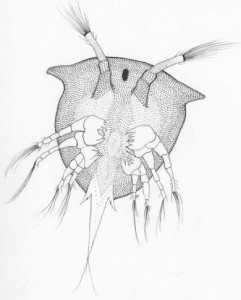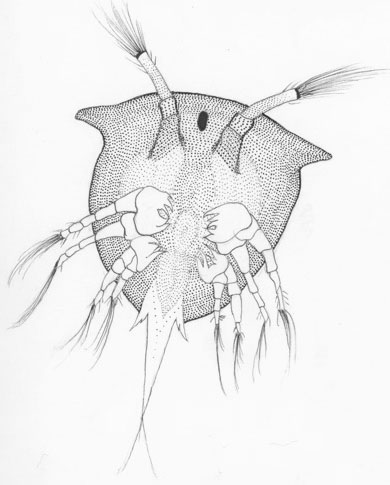 NAUPLIUS
NAUPLIUS
Kingdom: Animalia
Phylum: Anthropoda
Subphylum: Crustacea
The nauplius is the beginning larval stage of many crustaceans, such as barnacles,
crabs, and shrimp (Dahms, 2006). They are difficult to identify early on, but this
gets easier throughout their evolution. Nauplii emerge from fertilized eggs and
swim around using their antennae for a varied amount of time depending on the
animal. With a barnacle, it can take up to six months. In the first stage, they have
usually only formed the first antennae, the second antennae and the mandibles. During
moults, other appendages are added to the nauplius. This then leads to a metamorphosis into a juvenile form of the
crustacean. Nauplii are translucent under the microscope with splotches of red/orange visible within their bodies. The
dot in the middle of the head is referred to as the “naupliar” eye. The nauplius is a zooplankton and feeds on detritus.
As with all zooplankton, nauplii play an important role in the productivity of marine habitats.
Source:
Dahms, 2006. Key for the identification of crustacean nauplii. Organisms Diversity and Evolution. Volume 6, Issue 1, 9 February 2006, Pages 47–56. Elsevier.

